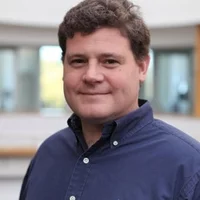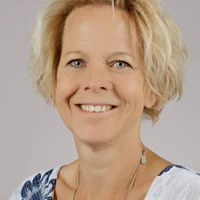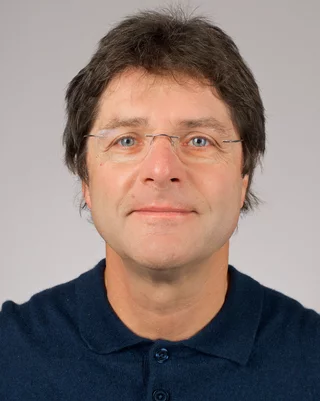Biography
Uwe Flechsig has been working at the Paul Scherrer Institut as a staff scientist since 1998. He is the head of the SLS beamline optics groups since 2007. His main subjects are optics design and metrology, in particular grating monochromators and soft X-ray beamlines for example: SIS, SIM, ADRESS, X-Treme, Optics, PolLux, NanoXAS, Pearl. In the last years he was responsible for the planning/ realization of the photon transport system for SwissFEL. Before joining PSI, Uwe Flechsig worked as scientist in the optics group at BESSY Berlin. During that time he built the constant length Rowland circle monochromator at BESSY I and an undulator beamline with plane grating monochromator for the Physikalisch Technische Bundesanstalt (PTB) at BESSY II. Uwe Flechsig studied physics at the Technische Universität Chemnitz, Germany and worked in the field of precision meachining at the Akademie der Wissenschaften Berlin, Zentalinstitut für Optik und Spektroskopie and later as a group leader at the Berliner Institut für Optik .
Institutional Responsibilities
The beamline optics group develops, realizes and maintains X-ray optics as a key component of the scientific infrastructure of a synchrotron and FEL beamline of the Swiss Light Source and SwissFEL. The team of 9 people with physicists, engineers and technicians is currently active to built the beam transport system for Cristallina and Athos beamlines and planning for SLS 2.0 and operates a metrology laboratory. A typical beamline project takes about 2 years with a X-ray optics related investment up to 5 MCHF.
Scientific Research
Uwe Flechsig's scientific research interests are related to instrumentation for synchrotron radiation and Free Electron Lasers (FELs) beamlines. This includes the development of grating- crystal- and multilayer monochromators, new cooling concepts X-ray optics under high heat load, metrology of X-ray optics and wave front propagation tools.
Selected Publications
For an extensive overview we kindly refer you to our publication repository Dora.
Extended SX-700 type monochromator combining normal and grazing incidence optics for a new undulator beamline at SLS, Flechsig, U., Patthey, L., & Quitmann, C., Nuclear Instruments and Methods in Physics Research, Section A: Accelerators, Spectrometers, Detectors and Associated Equipment, volume 467-468, pages 479-481, (2001), DOI: 10.1016/S0168-9002(01)00373-4. The surfaces and interfaces spectroscopy (SIS) beamline at the Swiss Light Source (SLS) covers the photon energy range from 10 to 800 eV. The beamline will start operation in summer 2001. The optical design is based on a SX-700 type plane grating monochromator extended by a normal incidence light path to provide high resolving power and harmonic rejection also at low photon energies. A reference article explaining the design principles which have later been adopted at most soft X-ray undulator beamlines at SLS.
The upgraded LTP-V at SLS, Flechsig, U., Jaggi, A., Krempaský, J., Spielmann, S., & Thominet, V., Nuclear Instruments and Methods in Physics Research, Section A: Accelerators, Spectrometers, Detectors and Associated Equipment, volume 710, pages 13-16. (2013), DOI: 10.1016/j.nima.2012.10.114. Since 2005 the Swiss Light Source (SLS) has been operating a Long Trace Profiler (LTP)-V from Ocean Optics in its metrology laboratory to measure the synchrotron optics for SLS. In 2012 we finished a significant upgrade to improve the accuracy, reliability and measurement efficiency in particular for the calibration of adaptive optics. Folding mirrors with figure errors < λ/100 and an additional linear encoder have been installed, the 1d CCD detector with 2048 pixels has been replaced by a 16 megapixel CCD camera with gigabit ethernet interface GigE, the monolithic software has been replaced by a modular, full- EPICS compatible system based on a new LTP plugin for the areaDetector software for image processing. The plugin allows slope determination in real time i.e. per frame. A reference for our efforts in the field of metrology.
Experimental demonstration of a soft x-ray self-seeded free-electron laser, Ratner D, Abela R, Amann J, Behrens C, Bohler D, Bouchard G, Bostedt C, Boyes M, Chow K, Cocco D, Decker FJ, Ding Y, Eckman C, Emma P, Fairley D, Feng Y, Field C, Flechsig U, Gassner G, Hastings J, Heimann P, Huang Z, Kelez N, Krzywinski J, Loos H, Lutman A, Marinelli A, Marcus G, Maxwell T, Montanez P, Moeller S, Morton D, Nuhn HD, Rodes N, Schlotter W, Serkez S, Stevens T, Turner J, Walz D, Welch J & Wu J, Physical Review Letters, 114(5), 054801 (5 pp.) (2015). DOI: 10.1103/PhysRevLett.114.054801. The Linac Coherent Light Source has added a self-seeding capability to the soft x-ray range using a grating monochromator system. We report the demonstration of soft x-ray self-seeding with a measured resolving power of 2000-5000, wavelength stability of 10-4, and an increase in peak brightness by a factor of 2-5 across the photon energy range of 500-1000 eV. By avoiding the need for a monochromator at the experimental station, the self-seeded beam can deliver as much as 50-fold higher brightness to users. Reference for our collaboration with LCLS to demonstrate soft X-ray self seeding at a FEL.


